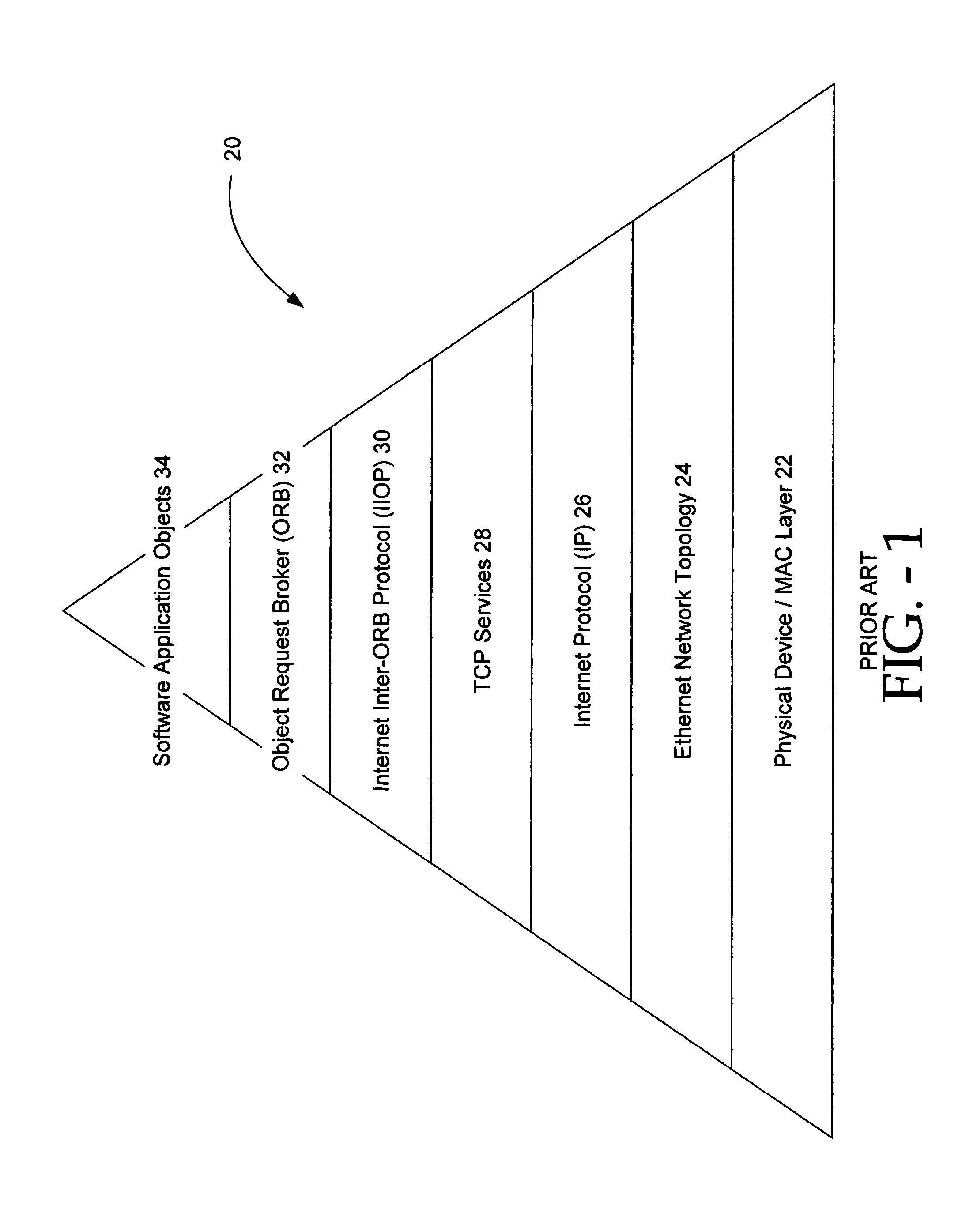System and method for concentration and load-balancing of requests
a request and load-balancing technology, applied in the field of distributed computing environments, can solve problems such as difficulties in ensuring system resources are sufficient to allow scalability, and may be achieved in the opposite direction to achieve scalability
- Summary
- Abstract
- Description
- Claims
- Application Information
AI Technical Summary
Benefits of technology
Problems solved by technology
Method used
Image
Examples
embodiment 80
[0029]As illustrated in FIG. 4, an embodiment 80 of an ISH concentrator of the invention is used to improve the scalability of the system first depicted in FIG. 2, which again includes remote client / servers 92, 94, 96, 98 and multiple local clients 82, 84, 86, 88. An ISH 90 reduces the number of active connections 81, 91 from n×m to n+m. In one embodiment of the invention message queues are used to replace the direct link to the remote servers—this reduces the number of active connections to just n.
[0030]An exemplary system including one embodiment 100 of the invention is shown in FIG. 5. As illustrated, several clients invoke upon a series of remote servers. The client may be, for example, a native C++ client 102, a Java client 164, a notification service 106, or a native server acting as a client 108. The remote server may be another native server 110, a native client registered for events 112, or a non-native CORBA-compliant ORB server 114. When one of the clients invokes upon a ...
embodiment 220
[0040]An embodiment 220 of the invention includes ISL / ISH support 224, 226, 228 for bi-directional IIOP to objects contained in clients connected to the ISH (FIG. 10). If the client ORB supports bi-directional GIOP 1.2, then the ISH will utilize the same connection to send requests and receive replies to / from the connected client. A client 222 will create an object reference and invoke on a native server. The client ORB will identify the connection as being bi-directional using the service context. The service context will travel with the message to the native server 236. When unmarshalling the object reference, the native server will compare the host / port in the service context with the host / port in the object reference. If they match, the ORB will add the ISH client identifier and other client information needed for routing to a tagged component in the object reference. This client information will travel with the object reference whenever it is passed to other native servers.
[004...
embodiment 240
[0042]An embodiment 240 of the invention also includes ISH support for bi-directional-like IIOP to objects contained in clients connected to the ISH (FIG. 11). If the client ORB does not support bi-directional GIOP 1.2, then the client 242, 244 can call an API routine to notify the ISH 252 of the listening port in the client. The ISH then creates a separate paired outbound connection, including an outbound socket connection from the ISH to the remote client / server 256, to send requests and receive replies to / from the connected client.
[0043]A client will create an object reference. It then calls a Bootstrap function passing the object reference. The ISH will get the host / port from the Interoperable Object Reference (IOR), and store it with the client context. The client will invoke on a native server passing the object reference. The ISH will create a service context containing the host / port from the register call. This service context travels with the message to the native server. W...
PUM
 Login to View More
Login to View More Abstract
Description
Claims
Application Information
 Login to View More
Login to View More - R&D
- Intellectual Property
- Life Sciences
- Materials
- Tech Scout
- Unparalleled Data Quality
- Higher Quality Content
- 60% Fewer Hallucinations
Browse by: Latest US Patents, China's latest patents, Technical Efficacy Thesaurus, Application Domain, Technology Topic, Popular Technical Reports.
© 2025 PatSnap. All rights reserved.Legal|Privacy policy|Modern Slavery Act Transparency Statement|Sitemap|About US| Contact US: help@patsnap.com



